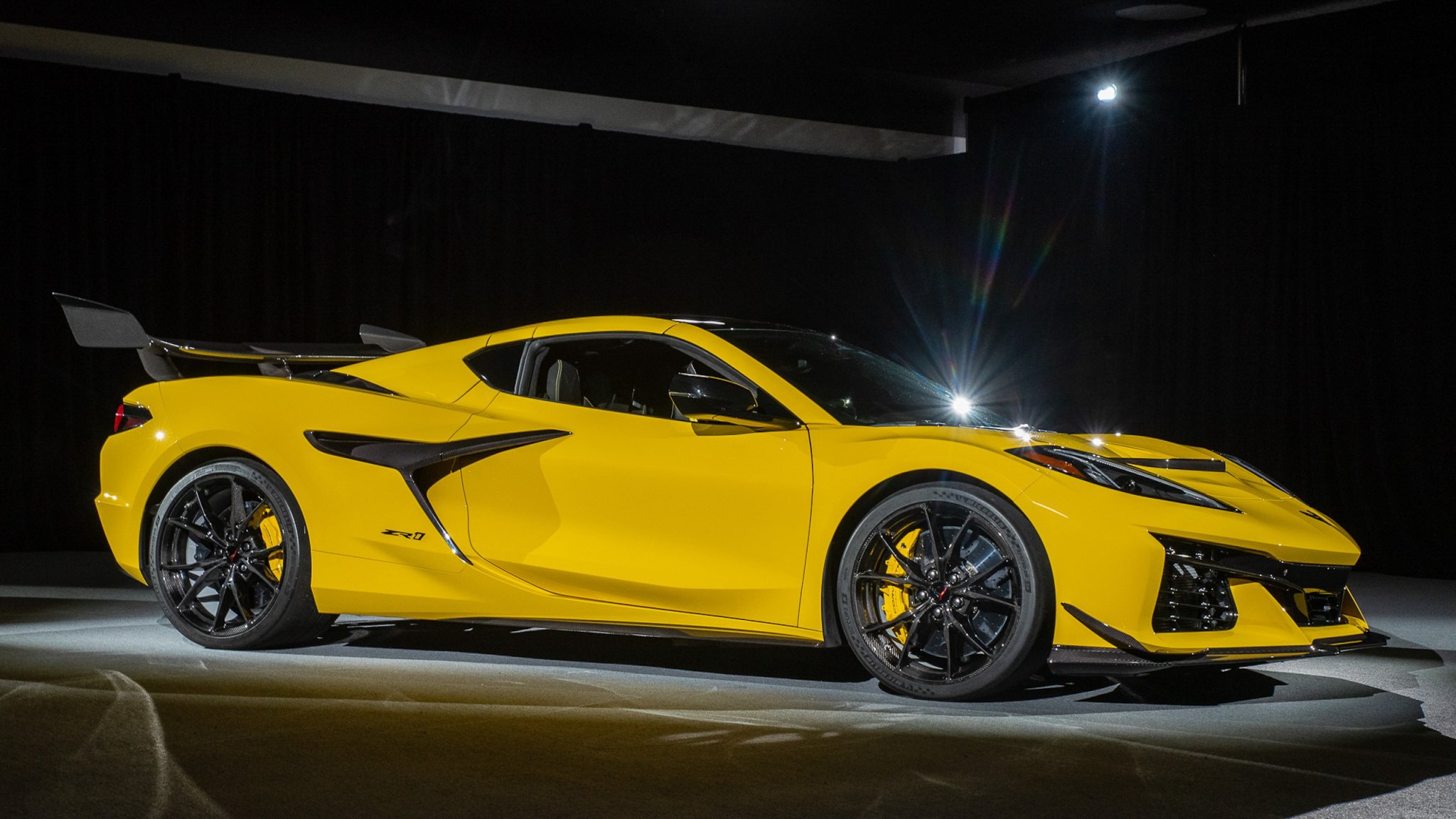

The 2025 Chevy Corvette ZR1 is the highest-performance ‘Vette in the history of America’s flagship sports car. To achieve that, Chevy engineers developed the LT7: A twin-turbo, flat-plane crank V8 that’s closely related to the Z06’s naturally aspirated howler. It’s the most powerful V8 ever made by a car company in the USA, producing 1,064 horsepower without the help of any electrification. That’s amazing, but in the age of battery-powered everything, it’s almost a surprise that Chevy didn’t utilize the Corvette E-Ray’s front axle here. So why didn’t it?
I mean, if making the most powerful Corvette was the point, then why not take the path of least resistance? We’ve seen the way electrification can aid a sports car’s performance, and there’s obviously a lot to gain from a marketing perspective by incorporating the tech. Curious to hear Chevy’s explanation, so we asked Corvette Executive Chief Engineer Tadge Juechter. His response was telling of the whole team’s passion for pure performance and pushing the boundaries of the so-called Gemini Small Block engine twins.

“The whole team has been working on this for a long time,” Juechter explained. “It’s been a long road to even get to the mid-engine architecture, and then, to be able to roll out all the models making sure each one has a clear purpose for what it is. The ZR1 is no different.
“The E-Ray was obviously new and everyone was scratching their heads saying, ‘What does that mean? What exactly is that?’ Now people are understanding why we did what we did and what that car is.”
In much the same way, Chevy needs to make clear what the ZR1 is. During our talk, Juechter asserted, “The ZR1 has been a charged solution for the modern era.”
Juechter explained that Chevy always had a roadmap in mind for the Corvette. Of course, it ultimately led to the long-awaited mid-engined ‘Vette, but Chevy also wanted a return to form. It’s not for nothing that late-model Corvettes are called Stingrays, nor that Chevy is calling the C8 ZR1 the “King of the Hill,” as a reference to the C4 ZR1 prototype.
The Gemini Small Block-powered Z models were simply the next waypoints on the C8 roadmap, as Juechter said that after the E-Ray release, “Everyone was like, ‘When’s the Z06? When’s the ZR1?’ That’s what everyone wanted to know. Now we’ve done the Z06, we’ve done the ZR1… almost. We think we’ve done absolutely the best job we could at taking this architecture and doing the best Z06, the best ZR1 you can do.”

Of course, there’s the chance that GM is saving battery assistance as a trick up its sleeve for an even faster model down the line. We won’t eliminate the possibility of an electrified LT7 just yet, as this technically leaves room for a hybrid model—possibly named Zora—that could combine the Corvette E-Ray’s front axle with the ZR1’s twin-turbo V8. There is no official confirmation for that, but I can tell you, there’s a whole lot of hope.
Got tips? Send ’em to tips@thedrive.com